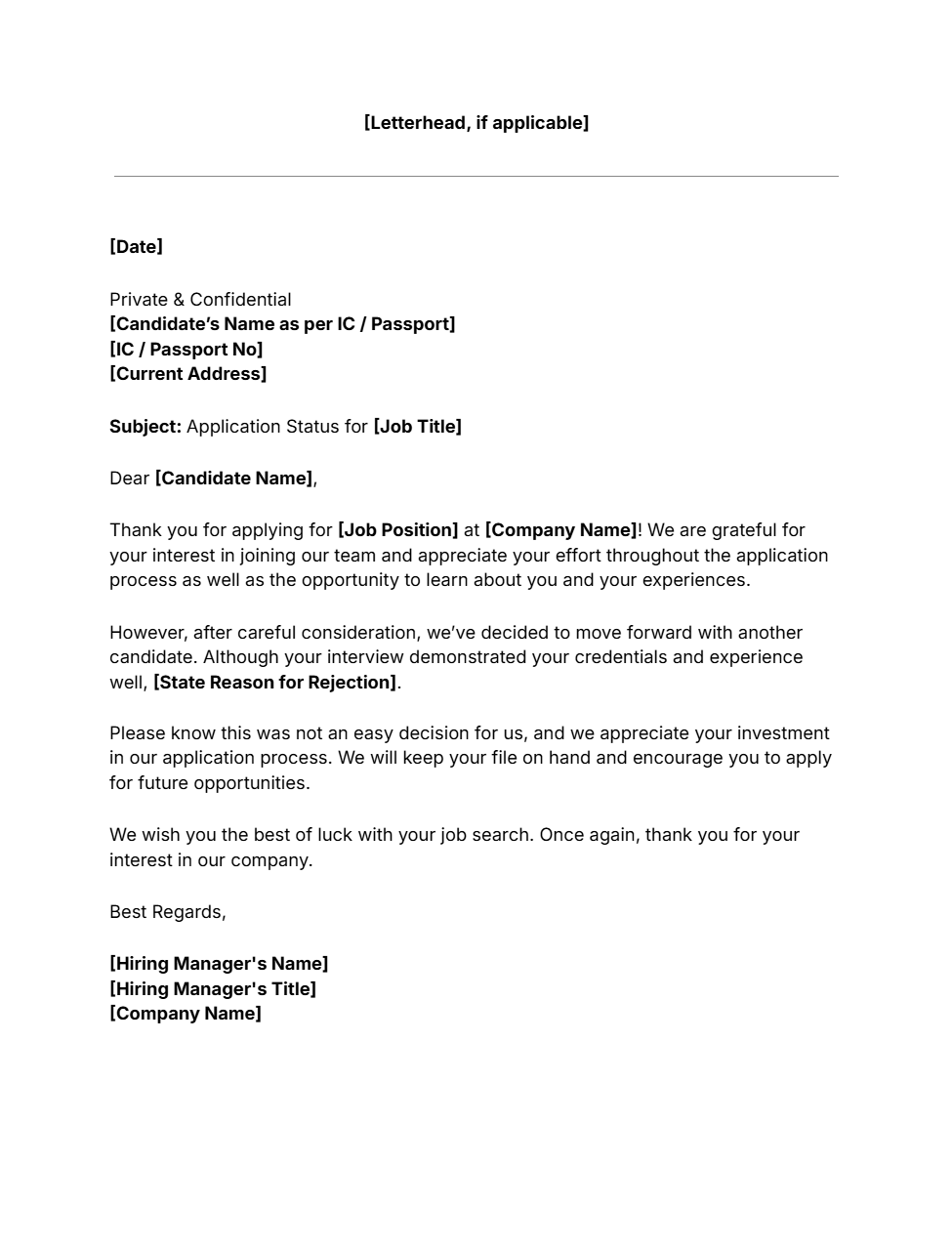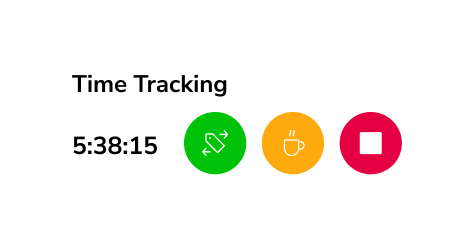Job Rejection Letter Template
We have created a professional and polite job rejection letter template that employers can customize to suit their tone, role, and hiring process.
What is a Job Rejection Letter?
A job rejection letter is a formal message sent by an employer to inform an applicant that they were not selected for the position. Usually following an interview call letter, it ensures closure for the candidate and helps maintain a professional connection for future opportunities.
It often comes after the applicant has submitted a job application letter and participated in the interview process.
Why is a Job Rejection Letter Important?
Sending a job rejection letter demonstrates respect and professionalism. Key benefits include:
- Maintaining candidate goodwill: Leaves a positive impression that can lead to future applications.
- Clear communication: Officially informs candidates about the outcome, reducing follow-up queries.
- Employer branding: Reinforces the company’s image as a considerate and communicative company.
- Consistency in hiring process: Ensure all applicants are treated fairly and respectfully.
What’s Included in a Job Rejection Letter?
A standard rejection letter typically contains:
- Date and candidate’s full details
- Subject line regarding the application status
- Appreciation for the candidate’s interest and effort
- A considerate message explaining the outcome
- A brief reason for the decision (optional)
- Encouragement to apply for future roles
- Best wishes for the candidate’s job search
- Contact details and signature of the hiring manager
When Should You Send a Job Rejection Letter?
A job rejection letter should be sent as soon as a final hiring decision has been made, typically after all shortlisted candidates have completed the interview process. Ideally, it follows after the interview call letter and the evaluation of each applicant’s suitability for the role.
Once the successful candidate has accepted the job offer letter, it’s respectful and professional to promptly notify the remaining applicants of the outcome. Timely communication shows courtesy and helps maintain a positive relationship with candidates who may be a great fit for future openings.
What Should You Do After Sending a Job Rejection Letter?
Once a rejection letter is sent, it’s good practice to update your applicant tracking system and maintain the candidate’s record for future roles. If appropriate, you may also follow up with promising applicants for upcoming openings. This reinforces a positive candidate experience and keeps the door open for future engagement.

Jibble’s free job rejection letter template


